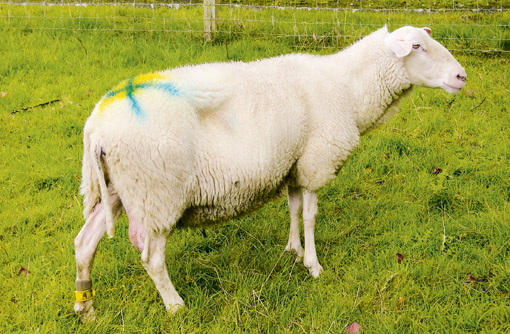Farmer talks of MV devastation as cases in UK double

Maedi visna infection has doubled in sheep flocks over the last 15 years. Sarah Trickett speaks to one producer about the devastating effects of the disease.
Cases of Maedi visna – a highly contagious and often fatal viral disease – have doubled over the last 15 years.
Results from a survey undertaken by the SAC and Animal Health and Veterinary Laboratories found that the number of infected sheep had increased four-fold, while the level of infection within infected flocks had increased from 13 to 24%.
And while the number of cases is still relatively low with only 2.8% of all flocks affected, the effect on individual flocks can be devastating.
And one farmer who can speak of the devastation MV can bring to a flock is dairy sheep farmer Martin Gott, who farms on the Holker Estate in Cumbria. Back in 2006 Mr Gott and his wife, Nicola, wanted to go in to milking sheep but in trying to set up the flock he struggled to find enough MV-accredited sheep to buy.
However, when a once MV-free accredited free flock came up for sale, Mr Gott perceived it to be the next best thing to an accredited flock and bought 60 ewes.
And although signs of the disease were there from the start with milk yields down, cases of pneumonia and poor lambs, Mr Gott never linked it to MV.
“We were still getting to grips with milking sheep at the time. However, our first lambing in Cumbria after moving up from Somerset was a bit of a shock with a lot of poor lambs and ewes going down with pneumonia, but even then we just put it down to bad weather.”
However, as the Gotts got to grips more with milking sheep they began questioning some of the health issues in the flock.
“We were struggling to figure out why milk yields were half what they should be and why four and five-year-old ewes were suddenly getting pneumonia but not able to fight it off even after antibiotics.
“It was only after the second lambing season, which was a bit of a shocker with a lot of lamb losses, that we decided to do something about it and get the flock blood tested.”
The results revealed that 60% of the Gotts 120 milking sheep flock was infected. They then had the difficult task deciding what to do.
“The two options we had were to run a flock with high numbers of youngstock to cover up the high losses of older stock to MV or take the option to cull out.”
And since the Gotts were only new to milking sheep they decided to bite the bullet and cull out the flock. “We were getting significant losses and it was just eating into the cashflow,” says Mr Gott.
After everything was culled the Gotts then struggled to find MV-free accredited milking sheep. Mr Gott turned to France to buy Lacaune milking sheep as they have a strict MV accreditation system; however, he could only source 20. He then managed to find a flock of Lacaune sheep in the UK.
And although they didn’t all test MV-free, after two years of quarantining the sheep and regular testing, Mr Gott eventually had his MV-free flock.
“It was only six months ago that we got officially MV-free accreditation. It has taken us four years to get there. Now we are yielding more milk, have better growth and production is just a lot better.”
Mr Gott believes that farmers should stop burying their heads in the sand and particularly anyone looking to sell breeding stock should be testing for it.
“I’m not saying culling out the flock is for everyone. But at least if you know you have MV in your flock you can work to control it. I also believe it should be a requirement to be MV-free accredited if you are selling any stock. This should be a duty.”
Mr Gott now tests every 12 months and while there is a cost to being accredited, he says it far outweighs the cost of the disease.
According to SAC vet Catriona Ritchie, the MV accreditation scheme has helped keep the levels of infection at relatively low levels. However, Ms Ritchie urges owners not to be complacent. “As this survey shows, levels of MV are rising.”
MV Facts
- No cure for MV
- Infection spreads through close contact and via colostrum
- Signs usually only seen after virus been in flock a while
- Visible signs not usually seen until about half the adult flock is infected
- Symptoms include: loss of body condition, poorer fertility, mastitis, twin-lamb disease, smaller and weaker lambs, lower milk yields reduced lamb growth, pneumonia
